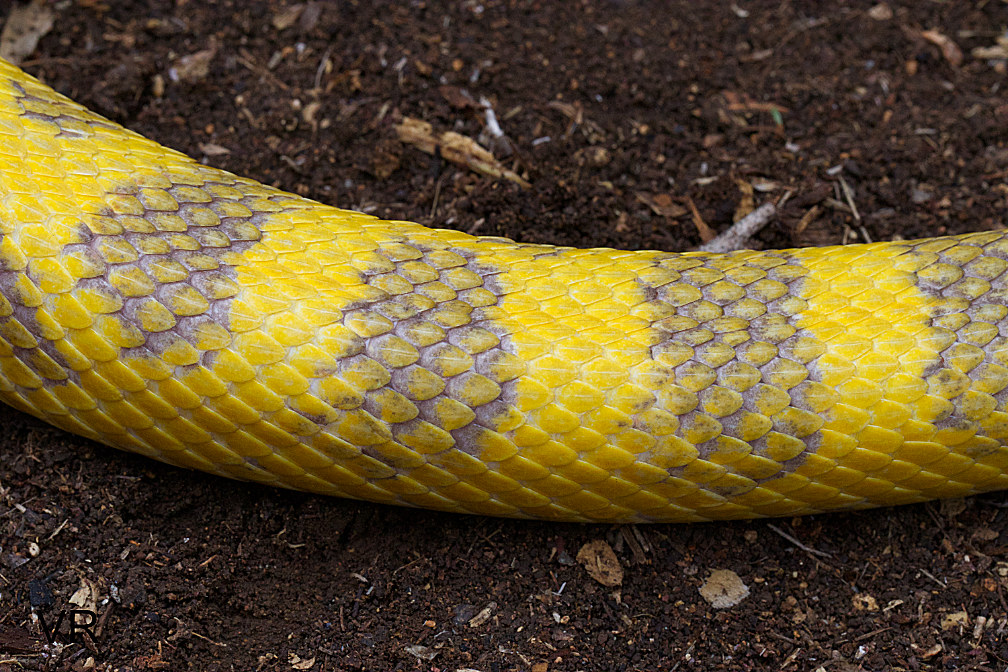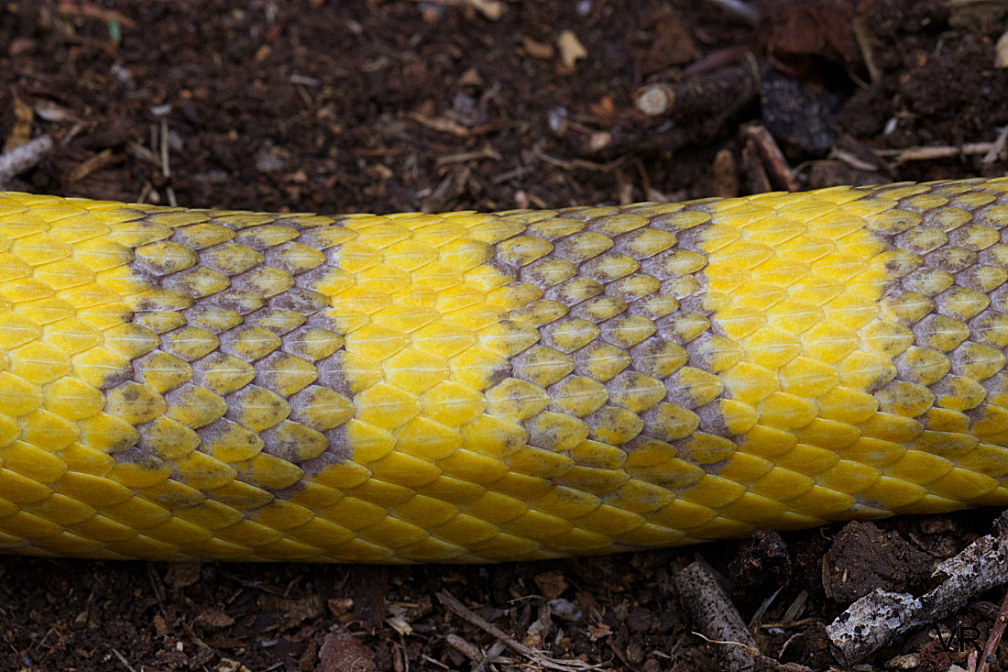



 |
|
VRHD - Summer Phase Pigmentation Detail
These 2 VRHD tail section macro photos
taken in natural light that illustrate the rather
startling blue/purple revealed by the VRHD
hypomelanistic condition on some Summer Phase adults.
This may occur on Winter Phase VRHDs as well but our
sample size is still rather small and we have seen it
on them so far. There is a point with the purple vs
blue call where I am patently unqualified to make the
distinction clearly so we shall just call it
purple/blue to keep the color police at bay. Note how
the splashes of red and orange blotch colors noted
elsewhere have been filtered out on these tail
sections leaving only the purple/blue. Interestingly,
this beautiful purple/blue does not occur on the tails
of Winter Phase VRHD. It is a mystery how the
purple/blue made it's way onto these animals, it
really should not be there. It doesn't seem to be a
trick of translucent skin giving bluish appearance as
seen in other "blue" albinos and hypos. 25 to 30 years
ago I heard, on the best authority possible, that a
"blue" Los Mimbres deppei existed. I filed the info
away as interesting and attributed the rumor to an
exaggeration of an animal with a light gray or
equivalent background, ie "blue" light phased L.
alterna and sky blue bairdi. Now, I am not so sure.
Normal deppei have solid dark (black) pigment as tail
blotches. However, elsewhere we have established the
possibility that purple/blue pigmentation may have
been there all along (please see:
http://www.vividreptiles.com/pages/vrhd-pg/vrhd-019)
and would never have been been revealed but for a
genetic quirk and very lucky roll of the dice. VRHD
tail blotches often have a heavy intrusion of
background color (yellow) making them appear a bit
less than whole.
So what is this apparent obsession with pigment detail
on these VRHD? The natural biological implications are
of the most interest me now but those breeders in the
know will realize that if the color is already present
on a colubrid in one location it can often be
"transferred" to another location through genetic
manipulation accomplished through line breeding. It's
a little trickier than working with simple recessive
traits that perform on cue but it is usually doable by
paying sharp attention to breeding outcomes. In my
early years of attempting to understand color range
and how it might work genetically on unadulterated
colubrid species I discovered that with intelligent
line breeding and time, color, from at least some
locations could indeed be transferred to other
locations. I no longer explore this line of inquiry
but it still interest me except in the context of how
it might figure into natural environmental
adaptations. For the intrepid line breeder however,
who knows what could be developed from the VRHD - pure
white snakes, solid yellow snakes, blue snakes, purple
snakes, yellow and purple/blue snakes, white and
purple/blue snakes . . .
|





